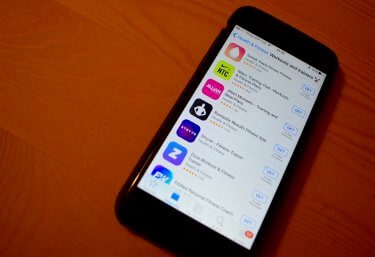Early in my career, I sought to be cutting edge with technology to stay ahead of my digital-native students. My ambition was to challenge them with new uses of technology, applied to physical education and fitness on various projects and assignments. What I found was that technology obstructed the learning process. Why was technology hampering their learning?

My curiosity led me to discover that it is a misconception that the next generation of students is inherently tech-savvy (Tanner, 2011; Wang, Hsu, Campbell, Coster, & Longhurst, 2014). While the modern student is often good at accepting and working with new gadgets and applications, they are not necessarily technologically literate. In other words, do they have the ability to apply technology in the context of academic content and professional communication?
While technology literacy is an important part of the education process, it is less important than students practicing lifetime fitness and physical education. Stated differently, the limited time we have with students should stay focused on learning physical activity. The exception is in physical education teacher preparation and other health-related professional development, where more time is dedicated to technology competence. When working with more general populations where the intent is to promote active lifestyles, it is more important to maximize time focused on each individual’s physical activity. Based on this premise, the best approach to technology in health and physical education is to keep it simple.

In addition to keeping the technology simple, physical activity content should be kept simple too. We should be accepting and open to facilitating many forms of physical activity. This is consistent with Corbin’s (2002) recommendation to emphasize the volume of physical activity over the intensity of fitness and performance. Hoeger, Hoeger, Fawson, & Hoeger (2020) also confirm the importance of an active lifestyle on overall health. They make the distinction between “fitness” and “physical activity,” showing the latter results in dramatic health benefits even in the absence of formalized exercise (i.e. scheduled workout session to improve fitness). Living an active lifestyle is very important for our well-being. Taking it a step further and developing fitness through formal exercise provides an additional bonus, but the most important thing is to live a physically active lifestyle.
As professionals, we do a disservice to the general public when over-emphasizing high levels of fitness and performance. Many individuals are too easily discouraged by lack of fitness gain or simply do not like the feeling of intense exercise. Health and Physical Educators will have the greatest impact by promoting an all-accepting, any-intensity physically active lifestyle. This approach can be a building block for all physical education and health educators and is the more practical step for today’s audience.

Fitness and Technology Downgrade Examples
As I changed my approach to practice this philosophy, I learned a few things on how to incorporate the simple concept in both technology and fitness. A few years ago, I developed a course that was intended to be a precursor to a college-level fitness class. The course, Outdoor Activities for Lifetime Wellness, was an elective where the underlying intent was to emphasize the pursuit and enjoyment of outdoor activities–of any type, at any intensity.
In the existing college fitness class, we covered fitness components such as mode, frequency, intensity, and duration. Each component was monitored throughout the term with fitness testing. In this new outdoor activities class, students were not required to monitor their intensity nor were they required to obtain certain levels of performance. The mode of activity was up to them and it could be very low intensity (e.g. gardening, window shopping, ATV riding). The intent was to do some type of enjoyable outdoor activities and try different types of activities. Students were also encouraged to monitor the volume of activity with some statistics, through some type of step counter, timer, or distance calculator. Since most students have smartphones, it is easy to choose an app that records data to give them feedback about the total activity and to provide documentation for me as the instructor.

Photo courtesy of www.forthwithlife.co.uk
Furthermore, to emphasize the social and interconnected nature of today’s students, they were collectively asked to choose a common platform (i.e. Facebook) for sharing what they were doing. While there are many available advanced fitness sharing apps and social platforms, I found that most classes ended up choosing a group Facebook page. This platform worked well in sharing their activities and I personally enjoyed seeing the pictures and information about their forays into various outdoor adventures. Along the way, I provided suggestions and guidance on concepts such as technical preparation, safety, modifications, and new activities to try.
In another example, I have a colleague that has taught an online jogging class for well over a decade. Originally he had students share their jogging sessions with a dedicated hashtag on Twitter, and more recently the Strava app; which allows users to share their running progress with others. The instructor has done well to keep the technology simple and practical for the students. While there are some doubters about the effectiveness of online jogging, even with some of the students that sign up for the class, I have seen first-hand how attitudes change towards physical activity when students are engaged using simple technology.

Conclusion
A simplistic approach to technology and content will help keep the main focus on bettering each person’s active lifestyle. Meeting the objective of students engaging in physical activity is an end in and of itself in education. There is a certain elegance in simplicity, and it can be done in a very powerful way, as in the example above. In a Facebook post to our class group, one of my students included a picture that showed her at the top of a rock climbing route with a big smile on her face. The post read, “I finally tried this, and found a new favorite sport.” A simple post that tells me, as her instructor, the class objective to promote physical activity was achieved. I saw clearly that she successfully planned out and made the effort to try something new, enjoyed it, and would likely seek out that type of experience again with new-found confidence and competency.
References
Corbin, C. B. (2002). Physical activity for everyone: What every physical educator should know about promoting lifelong physical activity. Journal of Teaching in Physical Education, 21(2), 128–44.
Hoeger, W. W. K., Hoeger, S. A., Fawson, A. L., & Hoeger, C. I. (2020). Principles and labs for fitness and wellness. Boston: Cengage.
Tanner, R. (2011, November 12). The myth of the tech-savvy student. Chronicle of Higher Education, p. B32.
Wang, S. K., Hsu, H. Y., Campbell, T., Coster, D. C., & Longhurst, M. (2014). An investigation of middle school science teachers and students use of technology inside and outside of classrooms: considering whether digital natives are more technology-savvy than their teachers. Educational Technology Research & Development, 62(6), 637–662.
